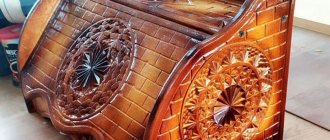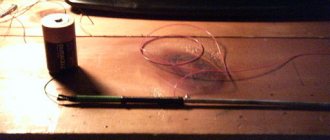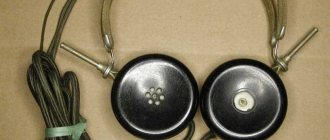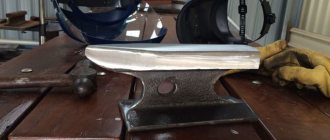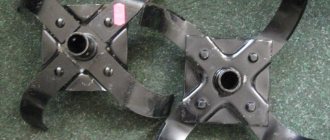Danger of detonation
A car with a turbine is often susceptible to detonation that occurs in the engine due to an increase in the amount of fuel-air mixture. Several methods can be used to prevent the occurrence of danger:
- use fuel with a high octane number;
- enrich the air-fuel mixture to reduce engine efficiency. This method requires constant monitoring of fuel consumption, since excess fuel will burn outside the cylinders, heating the turbocharger, exhaust manifold and exhaust tract;
- reduce the ignition timing;
- reduce the compression ratio, for which special pistons are installed.
Fuel your car with high octane fuel
In order for the engine and turbine of a car to work correctly, they must be “correctly” controlled, for which the best option is to use software. The program must be configured for a specific engine, since any other setting may damage it.
Is it possible to make an electric version with your own hands?
Steam turbine
Hypothetically it is possible, and many people install this on their car. Personally, I also thought about installing it on my car, but the price stopped me.
You need to solve a number of points:
1) Definitely installing a powerful generator, which is already expensive for a foreign car.
2) A powerful and compact electric motor, preferably brushless, it produces high speeds with optimal energy consumption. Personally, I have seen these for compact models, but with a power of 0.5 kW and above they are also not cheap.
3) Impeller and housing. You also need to make it yourself or buy it for maximum air injection. Also not an easy task.
4) And of course, a stabilizer or inverters to power the electric motor.
The tasks are not simple, some foreign cars do not have powerful generators, so it is very difficult to do!
But many craftsmen install it on their cars in the garage; an increase in power can actually be achieved up to 20 - 30%.
Moreover, many people install an additional air consumption sensor in the pipe in front of the turbine; it “sees” the pumped volume and automatically regulates a larger fuel supply (supplies values to the ECU) to enrich the fuel mixture. So the firmware may not be needed.
To make your vehicle run more efficiently, automobile manufacturers often resort to turbocharging systems. But will the new type of turbocharger have such a positive effect on engine performance? To make a car's fuel consumption much lower, manufacturers often use one key solution - reducing the volume of the power unit. But among other things, in order for the performance of such engines to remain at a decent level, they usually install turbochargers that are controlled by the exhaust and have a delay, which is better known as “turbo lag”.
Cars have been subject to this problem for many years in a row, which was accompanied by constant complaints and dissatisfaction from the owners. What seemed to be a panacea was found - the simultaneous installation of two turbines, which minimized the effect of the turbo pit. But this, alas, did not become the key decision.
History of the Electric Turbine
After a long period of development, the electric turbine is ready for mass use. Controlled Power Technologies (CPT) was the first to announce this.
from Britain. The electric turbocharger, they say, is ready for mass production. SRT management has already signed an agreement with Switched Reluctance Drives Limited to develop an OEM module based on this technological base.
Switched Reluctance Drives will be engaged in mass production of electric compressors. British developers, meanwhile, have already succeeded in creating real electric compressors for internal combustion engines. The CPT turbocharger will be installed on any engine: naturally aspirated, turbocharged diesel or gasoline.
Controlled Power Technologies has been developing the electric turbine for almost eight years, work on it began at the beginning of the 21st century. The creators of the electric turbine claim that it can operate from an on-board power supply of 12 volts, and its use will save the engine from the effect of turbo lag, and will also operate the supercharger even at low speeds. The peculiarity of this technology is the use of regenerative energy. The back pressure that was previously released through the blow-off bypass valve when the accelerator is reset is now directed to rotate the flywheel turbine blades, allowing power to be generated and the battery to be charged.
A prototype of a machine with an electric turbine was developed by the German company AVL List.
The electric supercharger has been adapted to the two-liter petrol engine with direct fuel injection. Such a power unit, which was installed on the Volkswagen Passat, pollutes the atmosphere very delicately, so to speak, only 159 grams per kilometer, and this is as much as 20 percent less than a similar traditional 2.0 TFSI with the same power, and less, than a 170-horsepower turbodiesel with the same volume.
Microturbine Turbosphere for power generation
The TurboSphere microturbine is an energy-saving installation for recycling the energy of excess pressure of natural gas and thermal energy with subsequent conversion into electrical energy.
It allows the use of low-potential energy resources, such as excess pressure energy and thermal waste to generate electricity, while working without consuming fuel, but only using part of the energy already expended for its operation.
Technology awaits funding!
Description
Advantages
Design and operating principle
Versatility of application
Application
Description:
The TurboSphere microturbine is an energy-saving installation for recycling the energy of excess pressure of natural gas and thermal energy with subsequent conversion into electrical energy.
It allows the use of low-potential energy resources, such as excess pressure energy and thermal waste to generate electricity, while working without consuming fuel, but only using part of the energy already expended for its operation.
The electrical power of the unit ranges from several kW to 500 kW and higher, depending on operating conditions. Input pressure 0.3–5.5 MPa, flow rate from 500 cubic meters. m/hour.
Advantages of TurboSphere over other turbines:
- high efficiency,
– compactness,
– versatility,
– multi-stage,
- slowness,
– tightness.
The TurboSphere microturbine uses a completely new approach to the design of such units. The installation combines a turbine, a heat exchanger and an electric generator.
The TurboSphere microturbine has only one impeller. But it carries out multi-stage expansion of the gas flow. This is possible due to the supply of the working fluid from one stage to another through the heat exchanger channels.
They heat the gas between stages. The working fluid moves repeatedly in a circular spiral inside the heat exchanger tubes, which form a spherical surface.
From the outside, the channels are washed with heating fluid.
The high efficiency of the TurboSphere, operating on any type of steam or gas, is due to the processes taking place in it.
This turbine fully implements multi-stage expansion of gas flow with intermediate heating.
As is known from thermodynamics, such a process approaches isothermal, in which it is possible to obtain maximum work and, therefore, maximum efficiency.
During the expansion process, the working fluid is cooled to a certain temperature; accordingly, in the heat exchanger between the stages it is necessary to heat it to the same temperature.
Multi-stage heat supply allows you to heat the gas flow not immediately, imparting a large amount of heat to it, but gradually.
Therefore, a low-temperature coolant is sufficient - it can even be cold tap water with a temperature of 10 degrees or more.
The TurboSphere microturbine does not have a gearbox, which significantly reduces its weight and size.
The electric generator is located inside the turbine housing. Impeller rotation speed up to 3000 rpm and higher.
The TurboSphere microturbine is characterized by the versatility of its application:
Firstly, it was initially developed as a turboexpander unit TDU, or, as it is also commonly called: turboexpander, DGA (turboexpander unit), GUBT (gas recovery non-compressor turbine), recovery turbine, etc.
In this regard, the TurboSphere microturbine is capable of playing the role of a turbine unit installed at the gas control point of the hydraulic fracturing station, gas control station of the gas distribution station, designed to reduce the pressure of natural gas. Traditionally, the pressure of the gas flow is reduced by throttling, i.e. creating resistance in gas pressure regulators.
This situation is justified in the presence of cheap energy resources. Today the situation has changed.
Secondly, in developed countries, simple pressure regulators are being replaced by similar turbines, although it would be more correct to say not “instead”, but “together”.
This is due to the fact that the manufactured machines are not perfect and are not able to regulate pressure as clearly as gas pressure regulators. TurboSphere does not have this significant drawback.
With its development, the production of gas microturbines reaches a new level.
Thirdly, a similar situation is observed when throttling water vapor in boiler rooms. A turbine operating instead of a reduction-cooling unit is capable of meeting at least the boiler house’s own needs.
Such turbines are called back-pressure turbines or P-type turbines.
The TurboSphere microturbine looks very competitive here too, due to the ability to regulate pressures and high efficiency of energy conversion.
Fourthly, the possibility of using a low-potential coolant can open up new horizons in the use of the TurboSphere microturbine. Namely, the utilization of low-grade waste heat, which is available at absolutely any enterprise.
This implies the use of a closed cycle of a low-boiling substance (freon, butane, etc.), which will be heated by waste heat.
This application of the TurboSphere microturbine allows the successful use of secondary energy resources of enterprises.
Application:
– converting the energy of excess pressure of natural gas into electricity instead of the energy lost during throttling at gas distribution stations and hydraulic fracturing,
– converting the energy of excess pressure of water vapor into electricity instead of the energy lost when throttling steam in boiler rooms,
– generation of electricity in low-boiling steam turbine plants when utilizing waste low-temperature heat,
– generation of electricity in gas turbine plants using fossil fuels,
– generation of electrical and thermal energy in turbine units operating in a binary gas-steam cycle (steam-gas plant, CCGT),
– application in pressurizers of diesel engines,
– production of cold and liquefaction of gases,
– application as drives for fans, smoke exhausters, etc.
Note: description of technologies using the example of the Turbosphere microturbine.
Site Map
gas microturbines price microturbine plant in Tutaev vacancies spare parts for microturbines capstone microturbines buy a microturbine buy microturbines St. Petersburg microturbine for a private home, do-it-yourself microturbine, do-it-yourself for home gas steam production Russian buy price service microturbine delta, vieskh, microturbine generator, microturbines in hybrids, in a hybrid car, capstone technical characteristics, capstone price, Russian production, St. Petersburg microturbines price, low power steam microturbines price production of microturbines calculation of microturbines example Russian microturbines
A few words about Chinese electric turbines
Homemade antenna for car radio with your own hands
Literally 2 years ago, the “auto Internet” simply exploded with electric turbines from China. A small “thingy” was offered, which was installed in the gap in the air intake hose, which supposedly pumped air with pressure into the engine, a promised increase in power by as much as 15%! The engine itself was an incomprehensible cooler, neither electricity consumption, nor speed, nor pumped air - there were no indicators. If you even disassemble it visually, it becomes clear that this is a cooler similar to advanced computer coolers, so what can it increase? NOTHING! So we just don’t buy - it’s a SCAM.
Now, of course, other electric turbines are starting to appear on the same Chinese sites, many are even made in the shape of a snail - ala a mechanical compressor. But again, there are no indicators of pressure, consumption, or air pumping. Think before you buy. Let's watch an educational video.
Operating principle
Scheme of operation of a steam turbine.
(Click to enlarge) The fact is that a steam turbine is, by and large, part of a special mechanism whose main task is to convert steam energy into electrical or thermal energy.
Technologically, the whole process looks like this:
- When various types of fuel are burned in a firebox, water turns into steam.
- With further overheating of the steam to 435 ºС and a pressure of 3.43 MPa, the steam is transferred through pipes to the turbine, where, with the help of special parts, it is evenly distributed among the nozzles.
- From the nozzles, steam is supplied to special curved blades that are attached to the shaft, because of this they rotate, as a result of which kinetic energy is transformed into mechanical energy.
- The generator shaft is an “electric motor” in reverse and is rotated by the turbine rotor, and this allows the generation of electricity.
- Next, the steam in the condenser, upon contact with cold water, again turns into water, which the pumps again pump in to heat it up.
Pros and cons of turbocharging an internal combustion engine with your own hands
How does a turbine operate on a gasoline engine?
The main advantage for which motorists decide on such tuning is the increase in power of the power unit. By no other means will you achieve such an increase as by installing a turbocharger. Moreover, you can implement a budget option for supercharging with a compressor yourself, spending money only on equipment.
Note. When the engine develops more force, additional opportunities for tuning the car appear. For example, installing wheels of larger diameter will not worsen the driving performance of the car.
The second advantage of turbocharging is the reduction in fuel consumption. In theory, you get increased power with the same fuel consumption, although in practice this is not the case. As tuning enthusiasts say, it is very difficult to drive in the same calm mode and not “push” when the engine is capable of more. In fact, gasoline consumption increases due to an active driving style.
Turbine on a Lada Priora car
Now about the disadvantages:
- all engine parts, starting with the cylinder-piston group, wear out faster due to increased load;
- the same applies to transmission elements not designed for increased torque;
- the car will have to be refueled only with high-quality gasoline with an octane rating of at least 95, and in some cases - 98;
- the event will cost you a pretty penny.
Installing a turbocharger makes sense if you want to increase the power and speed of your car. For everyday driving to work or transporting goods, such drastic changes are not necessary; it is enough to keep the car in good technical condition
Do not forget that any carelessness in handling a turbocharged engine can lead to its breakdown and major repairs.
Advice. If you are the owner of a VAZ car and want to install a supercharger for relatively little money, then it is better to start with a compressor. Its installation will not require major modifications to the engine and fuel system, and you can handle the installation yourself. To install a turbine, you will have to hire specialists to remake the engine and reflash the controller.
Firmware for the controller requires knowledge and special equipment
The last argument in favor of turbocharging is the tax provided for by the legislation of the Russian Federation on each additional kW of power of the vehicle’s power plant. Installation of supercharged units allows you to increase engine power with a constant annual payment to the state.
Compressor for painting from a refrigerator compressor
A more complex, reliable and productive version of the compressed air blower. It is made from inexpensive, and in some cases completely free, elements found in everyday life. Let us note in advance that to assemble this compressor for a spray gun with your own hands, you will need a welding machine. The following components may be suitable for production:
- Compressor from an old refrigerator.
- Fire extinguisher, truck, propane or other gas cylinder.
- Metal profile for welding the frame.
- Air hoses and clamps.
- Pressure gauge with regulator.
- Foam rubber as an air filter
A clear and detailed description of the assembly with a demonstration in operation is demonstrated in the following videos. The first version of the product, consisting of 2 connected compressors, is simpler, and the second is closer to the factory assembly.
Turbine installation
Whether it is possible to install a turbine on a car depends on the specific car model. In some cases, it is easier to purchase a new car than to select spare parts. If you decide to do this, then find a good technician, because it’s quite difficult to handle the installation yourself.
The conversion process begins with the removal of all parts in the car related to the air intake and exhaust. The new turbo manifold is connected to the turbine, which is deployed so that work with connecting the pipes is simplified as much as possible.
The bearings of a turbine that rotates at high speed constantly need lubrication. The oil supply pipe is connected to the place in the engine where the oil comes under pressure.
You can also use the oil pressure sensor tee for connection. The other end of the tube is connected to the top of the turbine cartridge. The oil will drain under low pressure into the pan through a special nipple. The cooling system will be connected on the other side of the water pump.
As more air enters the engine, it will require more fuel. To increase its flow, more efficient nozzles are installed. It also wouldn't hurt to install a new fuel pump that matches the injectors. But whether to do this is decided on a case-by-case basis.
Excessive air pressure in the engine will be controlled electronically. Coolant and air temperature sensors are connected to it. The controller must be calibrated so that fuel is injected at exactly the right time based on the engine condition.
The firmware of the motor should be done by a specialist with extensive experience behind him. Otherwise, by changing the factory settings, you can render the engine inoperative, and then spend money on repairing it.
If a compressor is installed on the car, the setup will be much easier. You won't need so many additional parts. It will be able to work at low and high speeds.
In general, the conversion process is quite labor-intensive and requires skills. Accordingly, the price of the issue will be high. Whether you need this, decide for yourself. But with successful installation of the turbine, the dynamic characteristics of the car are significantly improved.
Selection Criteria
If you still decide to purchase a unit, then you will need some criteria that you can rely on when choosing.
The choice is simplified by the fact that only generator furnaces are suitable for home use, and large-sized power plants are used for industrial use. Typically, the power of such stations varies from 100–200 kW.
When choosing a device, pay attention to what area it will serve and how much power you need to count on.
Scheme of operation of an electric generator with a Peltier element
To calculate the amount of fuel required, you will need to plan the degree of efficiency and use of the unit; the volume of the firewood container will depend on these indicators.
Turbine properties
The main task of the turbine is to increase the power of the machine's engine. Currently, there are many ways to increase engine power: chip tuning, installing zero-resistance filters, boring cylinders, polishing intake channels, using nitrous oxide. The most affordable and easiest way to increase engine power is a turbine for a car.
The job of turbocharging is to exhaust exhaust gases to the turbine wheel blades through the exhaust manifold. The turbine wheel is mounted on the same axis with a compression wheel, which pumps up high air pressure and supplies it to the engine intake manifold. These actions significantly increase engine power and reduce fuel consumption.
Do-it-yourself turbocharging on a VAZ
Today, turbocharging on a VAZ is exotic. But the advantages in terms of power of turbo engines over “atmospheric” ones contribute to the emergence of cars that are equipped with turbines. In fact, turbocharging a VAZ with your own hands means getting the maximum number of horses. With the same volume, a turbocharged engine can have twice the power with the same fuel consumption. Today, turbo engines with a small displacement have come into fashion. The specificity of such engines is such that while most improvements do not give anything on naturally aspirated engines, the results obtained on turbine engines are amazing. Many people have the opinion that with direct flow it is easier for the engine to “breathe” and spin. But these are unproven opinions. If a naturally aspirated engine produces more sound than direct flow, then it is easy to achieve high results with a turbo with simple intake and exhaust. Let's consider a turbocharger for a VAZ with our own hands in terms of modernization, the option of installing a low-pressure turbine and an engine with distributed injection. The standard crankshaft, connecting rods and cylinder block can be used. Valves and camshaft too. There may be differences in the cylinder head and pistons because... installing a turbine will require reducing the compression level. And this result can be achieved either by special pistons or by enlarging the combustion chamber. You can leave the original pistons, and limit yourself to just the head. Injection requires an enlarged receiver and a non-standard control program. It is worth noting that turbocharging a VAZ with your own hands will also require changes in lubrication. The exhaust is also different - a turbine is now located between the exhaust pipe and the exhaust manifold. It is advisable to use a standard resonator and muffler, but to obtain high power, you can also install a direct-flow exhaust. Installation of a low-pressure turbine is at your discretion and according to your capabilities. In the case of a VAZ car, do-it-yourself turbocharging on a VAZ is mounted on the right wheel drive between the exhaust pipe and the exhaust manifold. The compressor is supplied with two air pipes. The first is connected to the receiver, and the second to the air filter. Thus, the most scarce and expensive part is the turbine. For comparison, you can give a turbine with the characteristics of a factory car and a turbocharged one. The latter car is equipped with a standard exhaust, so it is not tuned to produce much power. A car with a turbocharged engine allows you to get maximum power.
Disadvantages of the electric option
Many of my readers think that making such a system is very simple, you need to take some kind of cooler and insert it into the air intake pipe and that’s happiness! Such “miracle coolers” are usually sold in Chinese online stores; we’ll talk about these types below.
However, guys, not everything is so simple here. In normal (idling) mode, a naturally aspirated 1.6-liter engine consumes approximately 300 - 400 liters of air per hour of operation. And at high speeds, say 4000 - 5000, we multiply this figure by 4 - 5, that is, 1200 - 1600 liters. Just imagine this volume! If you calculate the minute consumption 300/60 = 5 liters per minute, or 20 at high speeds.
So - the electric turbine should increase this figure, and not slow it down! If you install a weak engine, it will not pump up the required pressure, but will create an “air lock” effect, that is, with its blades it will slow down the flow of air into the engine and interfere with normal passage.
Now imagine what an electric version of the engine is needed to pump such a volume! I repeat, to increase performance you need at least 6 - 7 liters of air at idle, and 25 at high, and this is for the 1.6 liter version; for larger volumes you need more.
If we draw an analogy with German manufacturers, then they use at least a brushless 0.5 kW electric motor, which rotates at crazy speeds, can reach up to 20,000 and its pressure capacity ranges from 1 to 5 atmospheres.
For more powerful cars, more powerful engines up to 0.7 kW are used.
As it becomes clear, a standard generator may not be able to handle such electricity consumption, so it is replaced with a more powerful one, or an additional one is installed.
And as you know, high energy consumption simply slows down the generators, and therefore increases engine braking, which will affect its output and reduce efficiency.
However, the experiments carried out revealed an increase in productivity by approximately 20–30%, which is significant. But due to the complexity and high cost of the devices, application on cars is not yet in mass production.
For example, mechanical compressors are much cheaper and more efficient. Sometimes the difference in price can reach 5 – 7 times.
Homemade stations
Also, many craftsmen create homemade stations (usually based on a gas generator), which they then sell.
All this indicates that you can independently make a power plant from available materials and use it for your own purposes.
Next, let's look at how you can make the device yourself.
Based on a thermoelectric generator.
The first option is a power plant based on a Peltier plate. Let us immediately note that a device made at home is only suitable for charging a phone, a flashlight, or for lighting using LED lamps.
For production you will need:
- A metal body that will play the role of a furnace;
- Peltier plate (purchased separately);
- Voltage regulator with installed USB output;
- A heat exchanger or just a fan to provide cooling (you can take a computer cooler).
Making a power plant is very simple:
- We make a stove. We take a metal box (for example, a computer case) and unfold it so that the oven does not have a bottom. We make holes in the walls below for air supply. At the top you can install a grate on which you can place a kettle, etc.
- We mount the plate on the back wall;
- We mount the cooler on top of the plate;
- We connect a voltage regulator to the terminals from the plate, from which we power the cooler, and also draw terminals for connecting consumers.
It works simply: we light the wood, and as the plate heats up, electricity will begin to be generated at its terminals, which will be supplied to the voltage regulator. The cooler will start working from it, providing cooling of the plate.
conclusions
As you can see, a carburetor engine with a turbine has a right to exist and may even turn out to be more profitable compared to a conventional atmospheric one, although such a conversion will cause trouble and require serious alterations and financial costs. For obvious reasons, in practice, turbocharged carburetor internal combustion engines are very rare, especially in civilian cars.
Also, before installing the compressor, you should first decide in what modes you plan to operate the car: high-speed driving on the highway or ordinary everyday trips around the city.
It is also important to select and correctly configure the turbine in accordance with the working volume of the power unit itself. As a rule, the setup process is no less labor-intensive than installation. As for the service life of the engine, in most cases, installing supercharging on an atmospheric unit somehow reduces the service life of the engine and gearbox, especially if the engine and transmission were not specially prepared and modified for this
As for the engine life, in most cases, installing supercharging on a naturally aspirated unit somehow reduces the service life of the engine and gearbox, especially if the engine and transmission were not specially prepared and modified for this.

